Name El Anatsui | Books Gli: Wall | |
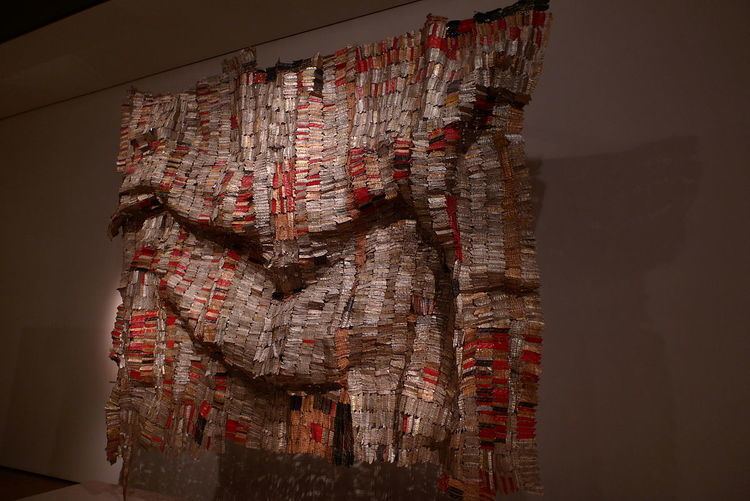 | ||
Similar People Yinka Shonibare, Pascale Marthine Tayou, Okwui Enwezor, Chika Okeke‑Agulu, Romuald Hazoume | ||
El Anatsui: Studio Process | Art21 "Extended Play"
El Anatsui (born 1944) is a Ghanaian sculptor active for much of his career in Nigeria. He has drawn particular international attention for his iconic "bottle-top installations", distinctive large-scale assemblages of thousands of pieces of aluminium sourced from alcohol recycling stations and sewn together with copper wire, transformed into metallic cloth-like wall sculptures in a way that can "draw connections between consumption, waste, and the environment".
Contents
- El Anatsui Studio Process Art21 Extended Play
- El anatsui
- Early life and education
- Artistic practice
- Exhibitions
- Awards
- References
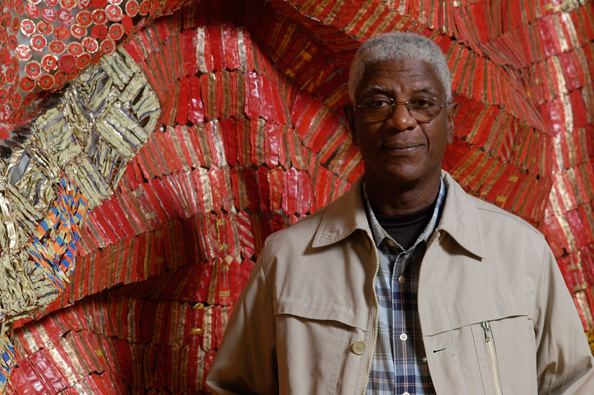
El anatsui
Early life and education
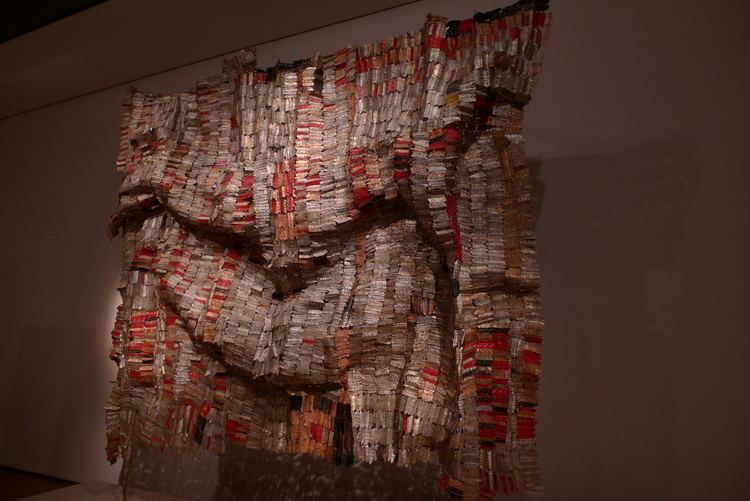
Anatsui was born in Anyako, in the Volta Region of Ghana, and trained at the College of Art, University of Science and Technology, in Kumasi, in central Ghana. He began teaching at the University of Nigeria, Nsukka, in 1975, and has become affiliated with the Nsukka group. Critic John McDonald has commented: "It has taken many years to find artists who can occupy a prominent place on the global circuit while choosing to reside outside the metropolitan centres. William Kentridge has made his reputation from Johannesburg, and El Anatsui has conquered the planet while living and working in the Nigerian university town of Nsukka."
Artistic practice
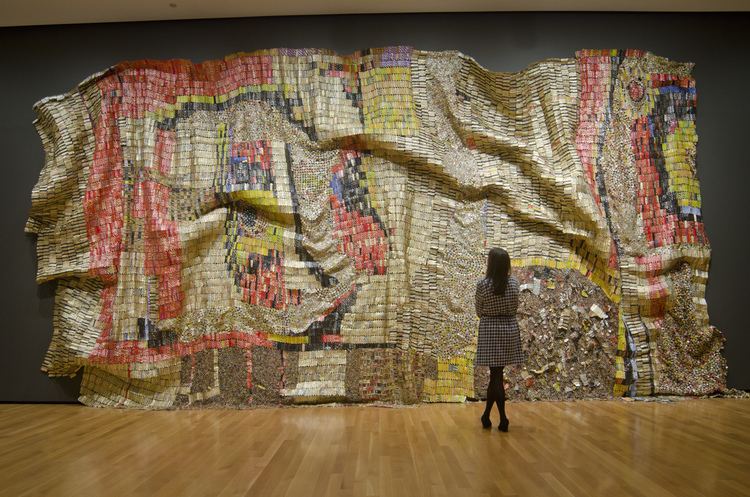
Many of Anatsui’s sculptures are mutable in form, conceived to be so free and flexible that they can be shaped in any way and altered in appearance for each installation. Working with wood, clay, metal, and—most recently—the discarded metal caps of liquor bottles, Anatsui breaks with sculpture’s traditional adherence to forms of fixed shape while visually referencing the history of abstraction in African and European art. The colorful and densely patterned fields of the works assembled from discarded liquor-bottle caps also trace a broader story of colonial and postcolonial economic and cultural exchange in Africa, told in the history of cast-off materials. The sculptures in wood and ceramics introduce ideas about the function of objects (their destruction, transformation, and regeneration) in everyday life, and the role of language in deciphering visual symbols. Anatsui's preferred media are clay and wood, which he uses to create objects based on traditional Ghanaian beliefs and other subjects. He has cut wood with chainsaws and blackened it with acetylene torches; more recently, he has turned to installation art. Some of his works resemble woven cloths such as kente cloth but were not intended as textiles, but as sculptures. Anatsui incorporates "Adinsubli" for his works, an acronym made up of uli, nsibidi, and Adinkra symbols, alongside Ghanaian motifs.
Exhibitions
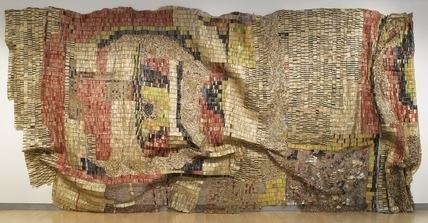
El Anatsui has exhibited his work around the world, including at the October Gallery, London (2016), Brooklyn Museum (2013), the Clark Art Institute (2011), Rice University Art Gallery, Houston (2010), Metropolitan Museum of Art, New York (2008–09); National Museum of African Art, Smithsonian Institution, in Washington, D.C. (2008); Fowler Museum at UCLA (2007); Venice Biennale (2007); Hayward Gallery (2005); Liverpool Biennial (2002); the National Museum of African Art (2001); the Centre de Cultura Contemporània de Barcelona (2001); the 8th Osaka Sculpture Triennale (1995); the 5th Gwangju Biennale (2004); and the Venice Biennale (1990).
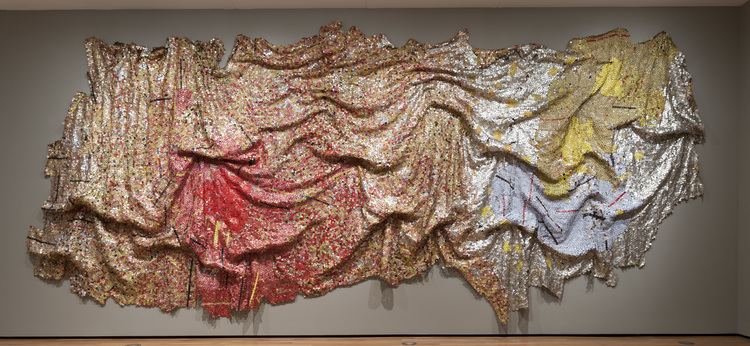
A retrospective of his work, entitled When I Last Wrote to You About Africa was organized by the Museum for African Art and opened at the Royal Ontario Museum in Toronto, Ontario, Canada, in October 2010. It toured venues in the United States for three years, concluding at the University of Michigan Museum of Art.
A major exhibition of recent works, entitled "Gravity & Grace: Monumental Works by El Anatsui," had its New York premiere at the Brooklyn Museum in February 2013. Organized by the Akron Art Museum (exhibition: 2012), the exhibition later travelled to the Des Moines Art Center (2013–14) and the Bass Museum of Art in Miami (2014).
Awards
In April 2015 the Venice Biennale announced that it has awarded El Anatsui the Golden Lion for Lifetime Achievement, a prize that "acknowledges not just his recent successes internationally, but also his artistic influence amongst two generations of artists working in West Africa."
On on 26 May 2016, he was awarded an honorary doctorate by Harvard University.
In 2017 he was awarded the Praemium Imperiale, the first Ghanaian to win the international art prize.
